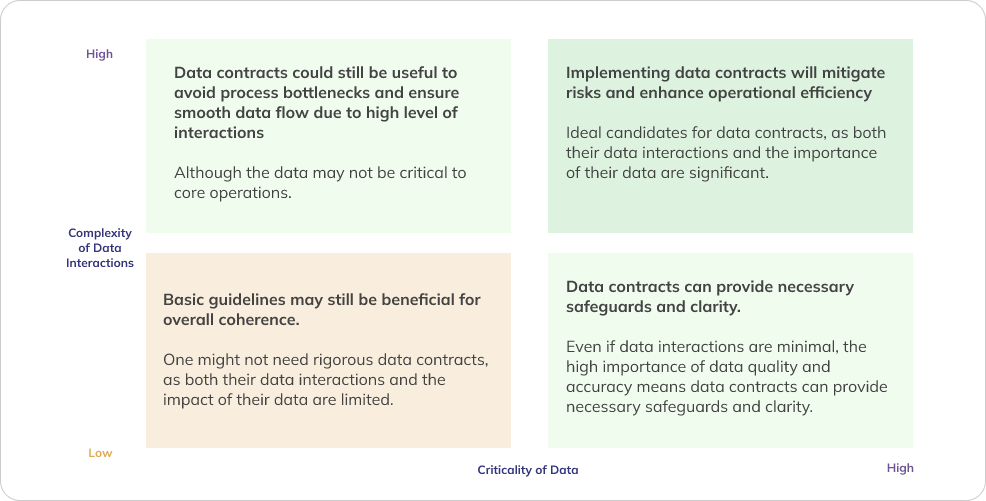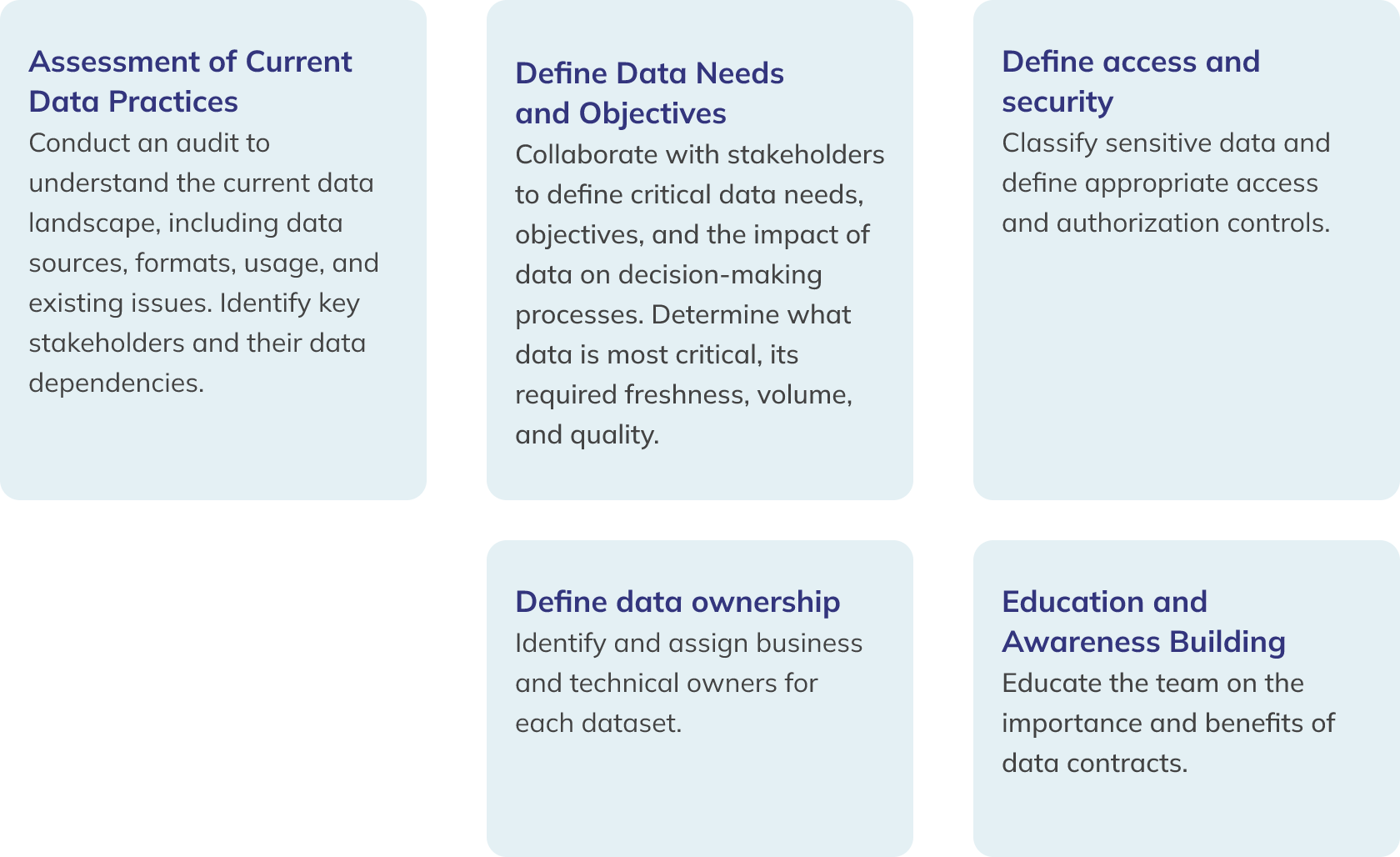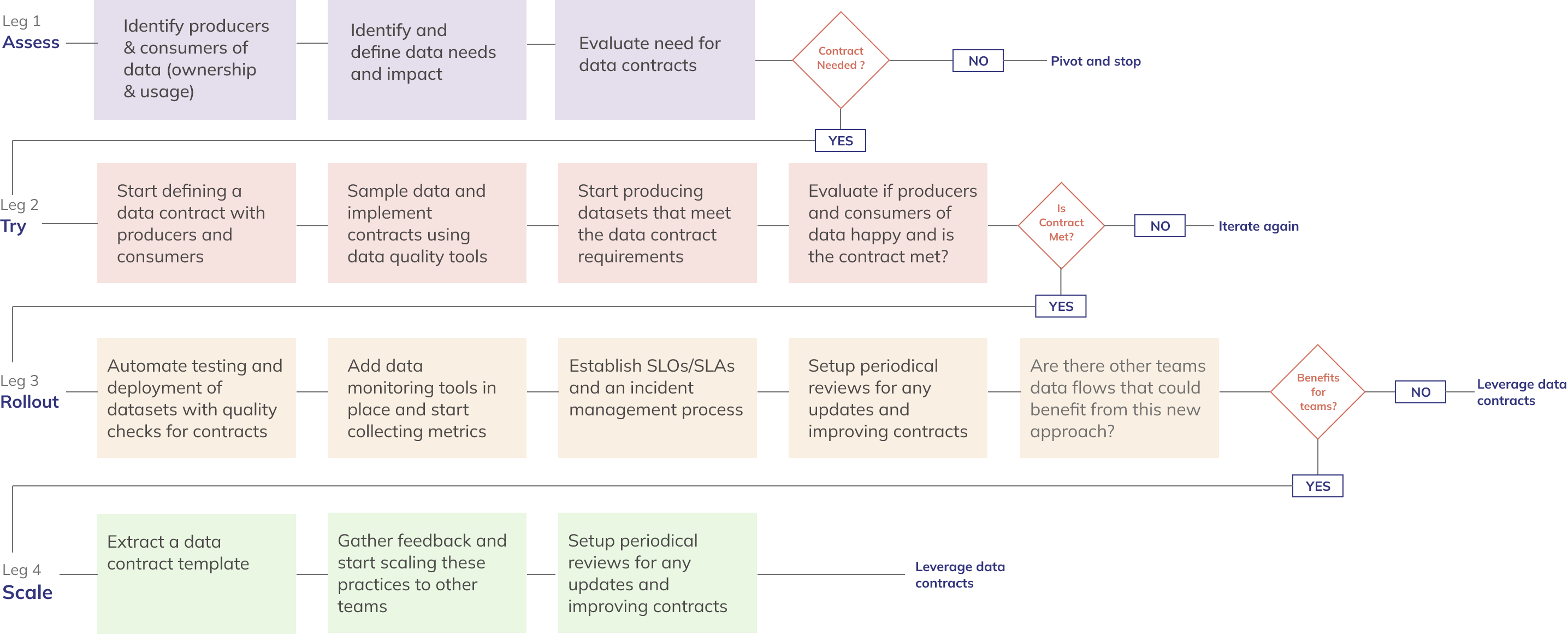Journey towards Data Integrity using Data Contracts
Introduction
Expedition in a nut-shell
Data contracts will provide the organisation a framework for governing data usage, ensuring compliance, and mitigating risks associated with data quality and integrity.
By establishing clear guidelines on data formats, semantics, and validation rules, data contracts enable strategic decision-making, foster data-driven initiatives, and promote trust and transparency within the organisations data ecosystem.
Between Teams
Across Organisation
Data Engineering
 Highlights
HighlightsHighlights
Data contracts are particularly valuable in environments where insights are generated collaboratively across multiple teams. In such settings, data flows between different groups, each potentially modifying or generating datasets. Here, data contracts help maintain consistency and clarity in several ways:
Who else took this journey
Organisation was able to boost business teams’ efficiency while shielding them from changing data models or complexity in joining datasets, and eventually deliver better business outcomes.
 Introduction
Introduction Relevancy
RelevancyRelevancy
Which of these situations do you normally see in your organisation?

How to proceed forward?
Time to start?
Data teams with unclear ownership of data might struggle to adopt over time in this journey.
(Vs)
Data teams with established processes will be able to adapt easily.
 Highlights
Highlights Preparation
PreparationPreparation
Things you need before the journey
 Relevancy
Relevancy Itinerary
Itinerary



